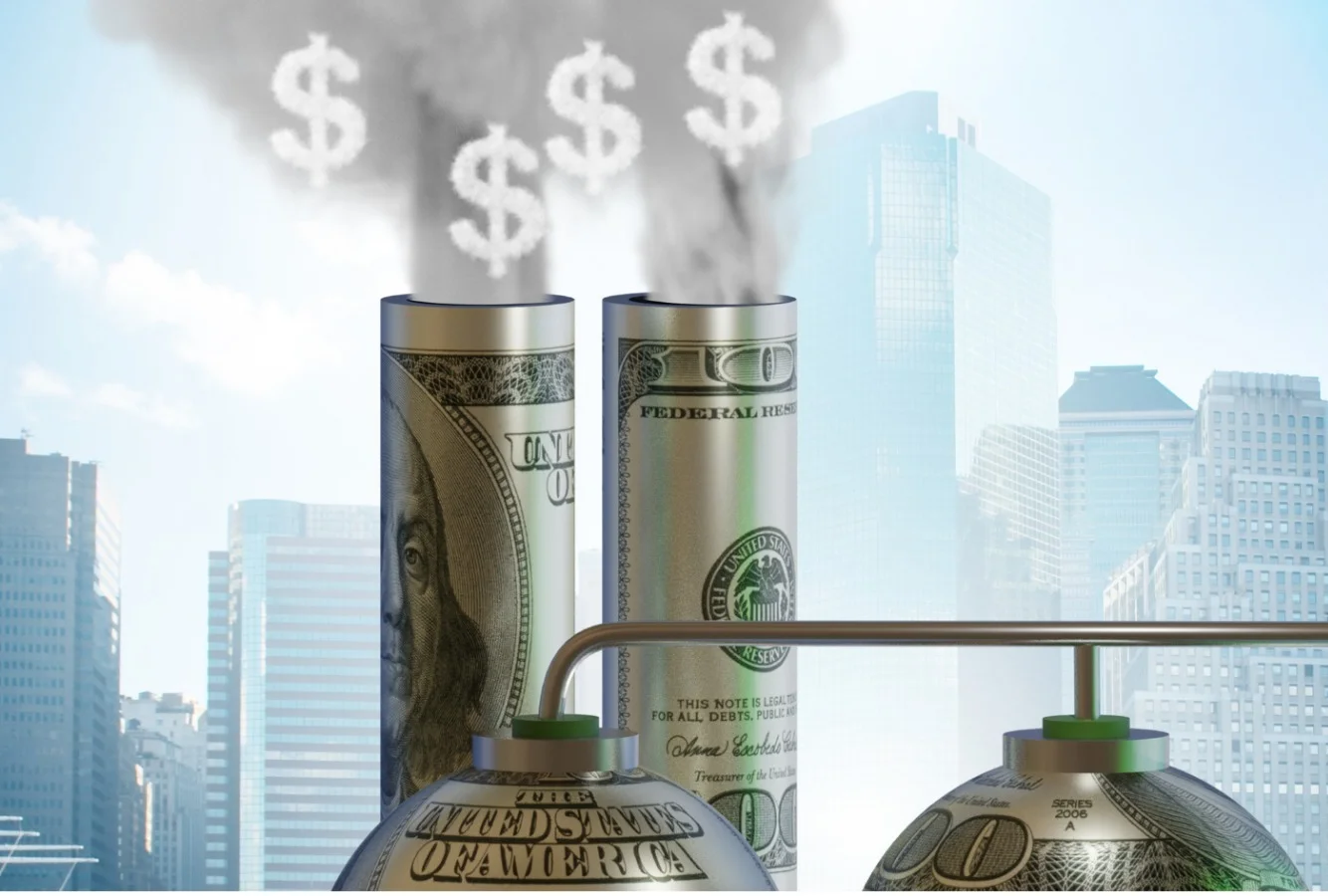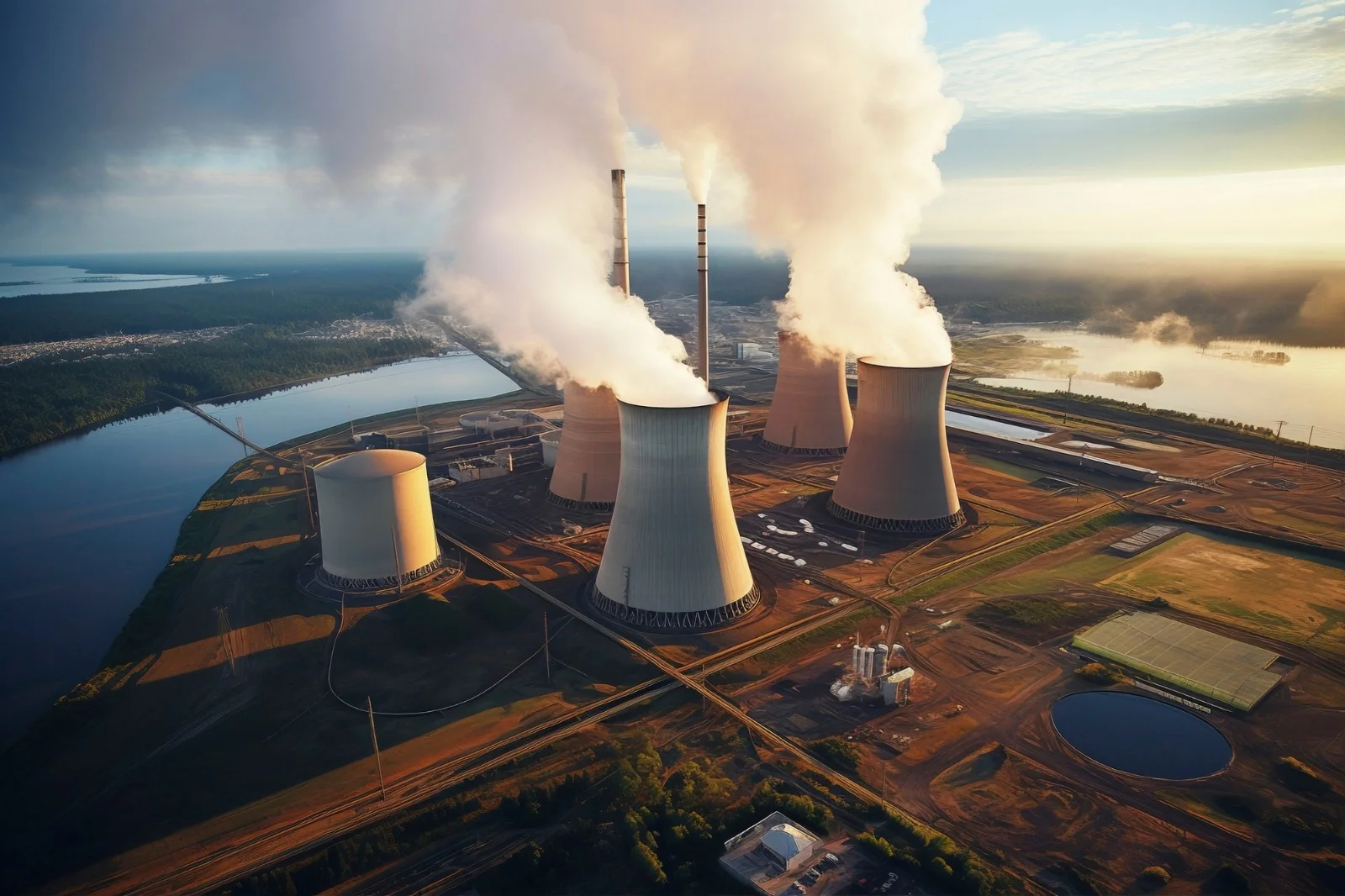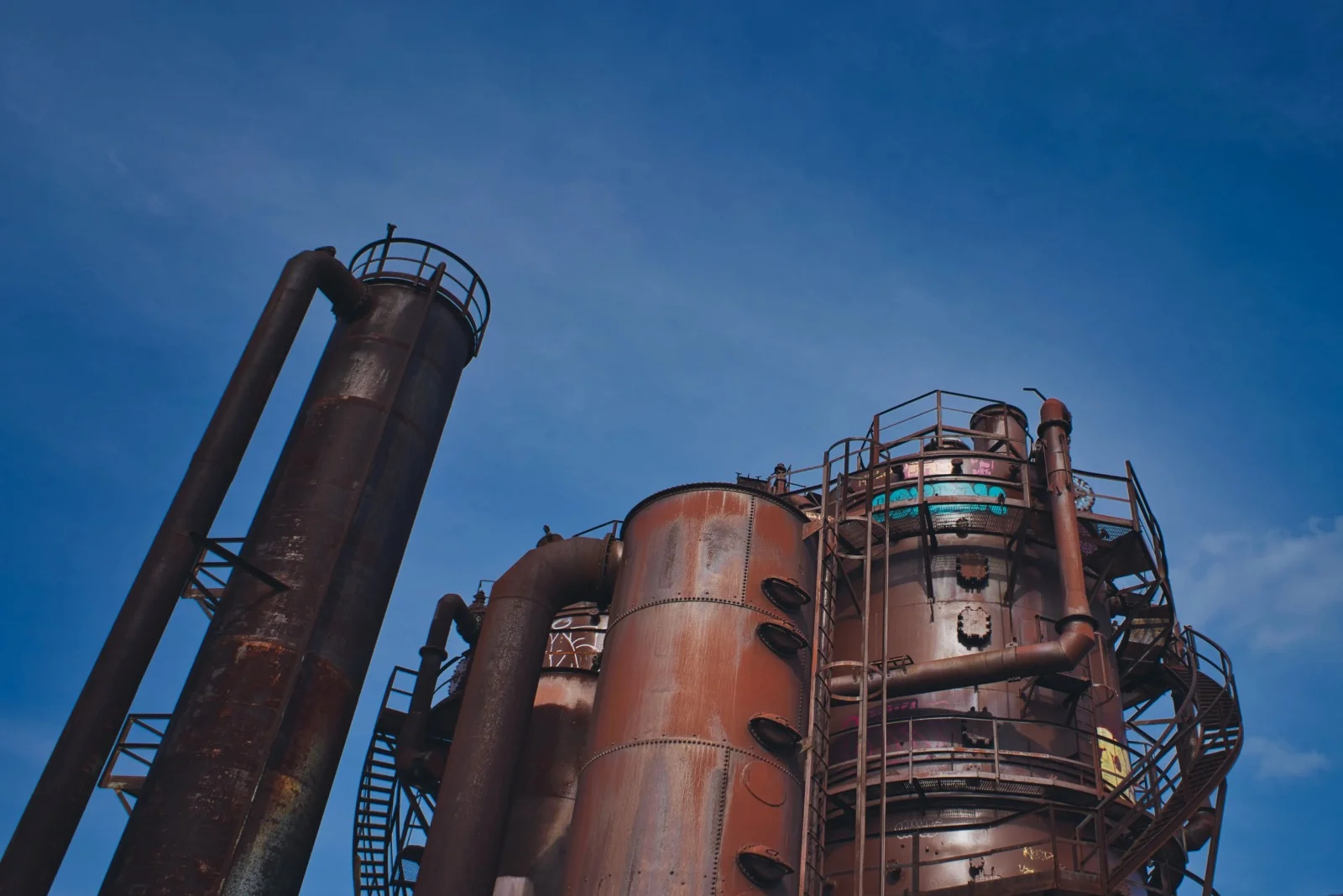Table of Contents
CCUS is a three-fold procedure, capturing carbon emissions, utilizing them for beneficial purposes, and securely storing them. The Oil & Gas industry, in particular, stands out as a fast adopter, leveraging CCUS to align operations with environmental sustainability goals. Beyond reducing carbon emissions, CCUS offers opportunities for enhanced oil recovery, optimizing resource utilization, and meeting stringent environmental safety commitments.
The technology not only enhances profitability by monetizing captured carbon but also promotes economic efficiency through cost reduction and operational optimization. Regulatory compliance becomes streamlined, ensuring a stable business environment, and positive stakeholder relations further position industries as responsible entities, attracting investments and collaborations.
As industries across various sectors, including Energy Production, Manufacturing, and Oil & Gas Exploration, embrace CCUS, it becomes a versatile solution driving sustainability, enhancing productivity, and boosting profits.
What is Carbon Capture Utilization and Storage (CCUS)?
CCUS represents a comprehensive approach aimed at mitigating carbon emissions from diverse sources. This technology encompasses capturing carbon dioxide emissions at their point of origin, their subsequent utilization for beneficial purposes, and ultimately, secure storage to prevent their release into the atmosphere. To understand what is carbon capture utilization and storage, let us first understand why we need it.

Besides its environmental benefits, the emerging ecosystem of Captured Sequestration has opened up a plethora of advantages for the Oil and Gas industry, making it one of the fast adopters of the technology. In the Oil & Gas Industry, Carbon Capture Utilization and Storage (CCUS) play a pivotal role in aligning operations with environmental sustainability goals.
CCUS not only reduces carbon emissions but also provides opportunities for enhanced oil recovery, thereby optimizing resource utilization. This technology enables the industry to meet stringent environmental safety commitments, mitigating climate change impacts. By capturing and storing carbon emissions, the Oil & Gas sector can navigate toward a more sustainable future, demonstrating a commitment to responsible practices while ensuring continued operational efficiency and longevity.
CCUS operates on the principle of capturing carbon dioxide emissions from industrial processes and power plants, preventing them from being released into the air where they contribute to the greenhouse effect. The captured carbon can be repurposed for various applications, such as enhanced oil recovery or the production of sustainable fuels. Also, storing the captured carbon securely using appropriate methods, to ensure permanent removal from the atmospheric carbon cycle is equally important.
Understanding the CCUS Technology
Industries are constantly striving to innovate ways to amp up their productivity while using their resources most sustainably and optimally. Carbon Capture Utilization and Storage (CCUS) has unfolded an array of opportunities for them. This innovative technology offers a three-pronged approach to reuse carbon emissions—capturing carbon, utilizing it beneficially, and securely storing it. Here is a brief overview of the CCUS process to understand its potential impact on creating a viable industry.
Carbon Capture Technology
Carbon capture involves trapping carbon dioxide emissions from industrial processes, power plants, burning of fossil fuel, and other sources before they enter the atmosphere. Cutting-edge technologies like amine-based solvents and membranes are employed to capture CO2. Amine scrubbing, for example, uses liquid solvents to absorb CO2, preventing its release into the air. The captured carbon dioxide is then separated from the solvent and prepared for the next phase.
Utilization of Captured Carbon
Captured carbon doesn’t have to be a burden; it can be a resource. Utilization involves converting CO2 into valuable products and a sustainable source of power generation for industries. Carbon dioxide can be used in the production of fossil fuels, chemicals, and materials. The process of carbon utilization not only reduces emissions but also creates economic opportunities. Companies are exploring ways to turn CO2 into building materials or even use it in enhanced oil recovery.
Safe and Secure Storage Options
To repurpose the captured carbon dioxide in various industrial processes across the Oil & Gas industry, safe storage is important. Geological carbon storage involves injecting CO2 deep underground into geological formations, such as depleted oil and gas fields or saline aquifers. This helps the CO2 capture and prevents it from escaping ensuring a secure and permanent storage solution.
Benefits of CCUS
Carbon Capture Utilization and Storage (CCUS) stands as a revolutionary technology, offering numerous advantages that directly impact the economy and production within the Oil and Gas industry.
Enhanced Oil Recovery (EOR)
Captured carbon dioxide can be utilized for Enhanced Oil Recovery (EOR). Injecting CO2 into depleted oil reservoirs enhances oil production by reducing the viscosity of the oil and improving reservoir pressure.
EOR leads to increased oil recovery rates, extending the productive life of oil fields and maximizing the economic value of existing assets. This process enhances profitability by tapping into additional reserves.
Monetizing Captured Carbon
The captured carbon can be repurposed for the production of valuable products such as synthetic fuels, chemicals, and materials. This diversification creates new revenue streams.
Monetizing captured carbon contributes directly to the industry's profitability by transforming what was once considered a waste product into a valuable resource with market demand.
Cost Reduction and Operational Efficiency
Investing in a CCUS project optimizes energy consumption in oil and gas processes, leading to operational efficiency.
Reduced energy consumption translates to cost savings, improving the overall economic viability of oil and gas operations. It also enhances competitiveness in the market.
Track Latest CCUS Across the World Unlock the Next Big Project!
Regulatory Compliance
CCUS helps the oil and gas industry meet stringent carbon dioxide removal targets set by governments and regulatory bodies worldwide.
Avoiding penalties associated with non-compliance and securing regulatory approval for operations ensures a stable and cost-effective business environment.
Market Positioning and Stakeholder Relations
Implementing CO2 capture strategies positions the oil and gas companies as environmentally responsible entities, which is increasingly important for investors, customers, and stakeholders.
Positive public perception and stakeholder trust can attract investments, partnerships, and collaborations, fostering economic growth and market leadership.
Future-Proofing Operations
Integrating CCUS technology demonstrates a commitment to sustainable practices, securing the industry's long-term viability.
Future-proofing operations by embracing environmentally conscious practices ensure continued access to capital and markets.
Harnessing the Power of CCUS Across Industries
Carbon Capture Utilization and Storage (CCUS) has evolved from a promising technology to a crucial asset across various industries, driving sustainability, enhancing productivity, and boosting profits. Several sectors have embraced CCUS as a transformative solution to address carbon emissions and align with global environmental goals.

Energy Production
CCUS has found widespread application in the energy sector, particularly in fossil fuel-based power generation. By capturing carbon emissions from power plants, industries can significantly reduce their environmental impact without compromising energy production. This not only meets regulatory standards but also ensures the continued viability of traditional energy sources.
The captured carbon dioxide can be utilized for enhanced oil recovery (EOR) in the oil and gas industry, improving production rates and optimizing resource utilization. Additionally, the repurposing of captured CO2 for sustainable fossil fuel contributes to a circular carbon economy.
Manufacturing and Industrial Process
CCUS technologies are deployed in various manufacturing sectors to capture carbon emissions from industrial processes. This includes cement production, steel manufacturing, and chemical processing. These industries produce significant CO2 emissions, and CCUS offers a viable solution to mitigate their environmental impact.
Beyond the reduction of carbon emissions, industries are finding economic value in the captured carbon. Innovative methods convert CO2 into valuable products like plastics, chemicals, and construction materials. This not only reduces waste but also creates new revenue streams, contributing to enhanced profitability.
Track Latest CCUS Across the World Unlock the Next Big Project!
Oil and Gas Exploration
CCUS plays a pivotal role in the process of Enhanced Oil Recovery (EOR) in the oil and gas industry. Injecting captured CO2 into depleted oil reservoirs enhances oil recovery rates, maximizing production efficiency. This dual-purpose utilization of captured carbon not only contributes to environmental stewardship but also strengthens the economic viability of oil and gas operations.
With the oil and gas industry facing increasing scrutiny for its environmental impact, integrating CCUS technology helps secure the sector's long-term viability. By aligning with sustainability goals, companies can maintain a social license to operate and access capital from environmentally conscious investors.
Chemical Production and Refining
CCUS is making significant strides in the chemical production and refining sectors, where high emissions are inherent to the processes. By capturing carbon at the source, these industries can mitigate their environmental footprint and comply with stringent emissions standards.
Captured carbon serves as a raw material for the production of sustainable chemicals and materials. This not only aligns with environmental goals but also positions companies as leaders in sustainable practices, enhancing market competitiveness.
CCUS is a versatile solution that extends its benefits across multiple industries, from energy production to manufacturing and beyond. As industries increasingly recognize the economic advantages of CCUS deployment, its widespread adoption becomes not just an environmental imperative but a strategic move to unlock productivity, ensure profitability, and pave the way for a sustainable future.
Global Top Carbon Capture Companies
Several organizations globally have played pivotal roles in the development and deployment of Carbon Capture Utilization and Storage (CCUS) measures.

Here is a mention of the few organizations topping the list (in alphabetical order):
- Aker Carbon Capture
- Carbfix
- Svante
Read our take on Global Top 10 Carbon Capture Companies for a broader picture.
Government Initiatives in Promoting CCUS Technology
Countries worldwide are taking significant strides in adopting and developing Carbon Capture Utilization and Storage (CCUS) measures, reflecting a global commitment to develop a more sustainable and lucrative industrial process alongside combatting climate change.
Notably, the United States and the United Kingdom have intensified funding for the CCUS project, with the U.S. introducing new funding under the 2021 Infrastructure Investment and Jobs Act and favorable tax credit changes in the 2022 Inflation Reduction Act. The European Union, spearheading progress, proposed an annual CO2 injection target for 2030 and improved permitting procedures, exemplified by Denmark's operational Project Greensand.
The United Kingdom allocated GBP 20 billion in its Spring Budget 2023 to expedite CCUS project deployment, showcasing a robust commitment to sustainable initiatives. Indonesia has emerged as a trailblazer in the Asia-Pacific region, finalizing its legal and regulatory framework for CCUS, setting a precedent for the region. Meanwhile, China and Japan are making significant strides, with China witnessing the operation of three new projects in 2023, and Japan selecting seven projects for support toward commercialization.
| Major CCUS Projects around the world | ||
| 1 | Stanlow HyNet Hydrogen Production Project (HPP) Phase I | Planning |
| 2 | Fidelis Cyclus Baton Rouge Carbon - Full Chain Project | Contract Awarded |
| 3 | Jubail Carbon Capture Utilization and Storage (CCUS) Hub Phase - I | Planning |
Check out our CCUS Database to find more such CCUS projects around the world.
Future Outlook for the CCUS Sector
Carbon capture, utilization, and storage (CCUS) present both challenges and prospects for the economic future of heavy industries. The adoption of CCUS technologies in heavy industries is hindered by high implementation costs. The financial burden of integrating CCUS systems poses a challenge for industries already grappling with operational expenses.
However, the prospects lie in the potential to mitigate the environmental impact of these sectors, meeting emissions targets and ensuring sustainable practices. CCUS could transform heavy industries into more environmentally friendly entities, fostering long-term economic resilience by aligning with global carbon reduction goals. Achieving a balance between affordability and environmental responsibility is crucial for unlocking the full economic potential of CCUS in heavy industries.
Carbon Capture Utilization and Storage (CCUS) emerges as a powerful and transformative technology, addressing the urgent need to mitigate carbon emissions globally. As industries, especially in the Oil & Gas sector, increasingly recognize its economic and environmental benefits, CCUS becomes a cornerstone for a sustainable future.
For a comprehensive understanding of the global CCUS landscape and market trends, explore the insights provided in Blackridge's report on the Global Carbon Capture Utilization and Storage (CCUS) Market. Stay informed about the dynamic developments and opportunities as these countries lead the way in shaping the future of sustainable energy practices.

FAQs
What is the difference between CCS and CCUS?
Carbon Capture and Storage (CCS) involves capturing and storing carbon dioxide emissions, preventing them from entering the atmosphere. Carbon Capture, Utilization, and Storage (CCUS) go a step further by not only capturing and storing CO2 but also finding ways to utilize it in various applications across various industries.
Where is the captured carbon stored?
The carbon captured by CCUS technology is stored in geological formations such as depleted oil and gas fields, deep saline formations, and unmineable coal seams.
What is DAC in CCUS?
Direct Air Capture (DAC) is a technology within CCUS that involves removing carbon dioxide directly from the atmosphere and subsequently either storing it or utilizing it in various applications.
Is CCUS renewable?
CCUS is a technology that involves capturing and storing carbon dioxide emissions from non-renewable sources like fossil fuels. It contributes to emissions reduction but does not rely on renewable energy generation. Moreover, since CCUS is a technology, it cannot be categorized based on renewability.
What are the materials used in CCUS?
Common materials used in CCUS include solvents like amines for capturing CO2, pipelines for transportation, and storage sites such as depleted oil and gas fields or deep geological formations for sequestering captured carbon dioxide.
Also Read: Global Top 10 Carbon Capture Companies [2024]
Discover CCUS projects with ease
Are you looking for a platform that gives you reliable, high-quality, and timely project insights for CCUS projects in the Netherlands?
Discover the Global Project Tracking (GPT) platform by Blackridge Research, designed to provide you with the most recent CCUS Projects and Tenders around the world better and faster across various stages of development:
- Upcoming projects
- Tender Notices
- Contract award announcements
- Projects in progress or under construction
- Successfully completed projects.
The user-friendly interface helps you obtain early-stage awareness of projects and find the right business opportunity quickly.
Each project will have all the essential details, such as scope, capacity, CapEx, status, project description, companies involved, funding information, location, periodic updates, important event dates like construction start date, commissioning dates, and key contact information of project owners and stakeholders.
The database is a vital resource for a wide range of entities, including energy companies, industrial manufacturers, technology providers, investment firms, government agencies, regulatory bodies, research institutions, environmental consulting firms, utilities, and grid operators, renewable energy developers, and carbon offset market participants.
Book a Free demo to learn more about the global CCUS projects database and how we can help you achieve your goals.








Leave a Comment
We love hearing from our readers and value your feedback. If you have any questions or comments about our content, feel free to leave a comment below.
We read every comment and do our best to respond to them all.